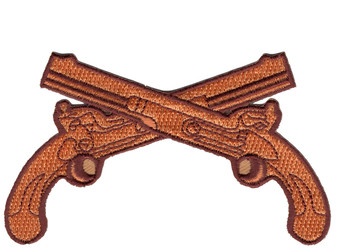Description
They are the soldiers who stand between order and chaos, the first to respond when everything begins to unravel. In garrison, on convoy routes, inside war-torn cities, and across sprawling bases in foreign lands, the U.S. Army Military Police—the MPs—carry a mission built on discipline, protection, and unwavering resolve. To wear the MP MOS is to serve as both warrior and guardian, equally prepared to fight, defend, enforce, and preserve the safety of soldiers and civilians alike.
The lineage of the Military Police Corps stretches back to the Revolutionary War, when early provost marshals were tasked with maintaining discipline among the Continental Army. But it was in World War II that the modern MP profession fully emerged. MPs directed traffic across the beaches of Normandy, secured prisoners of war, and protected supply routes that fed the Allied advance across Europe. In the Pacific, MPs kept order across newly taken islands, supported amphibious operations, and guarded critical infrastructure as the war spread from Guadalcanal to Okinawa.
During the Korean War, MPs found themselves in a new kind of conflict—managing vast refugee flows, directing armored columns through treacherous terrain, and fighting in brutal close-quarters engagements when enemy breakthroughs threatened supply lines. In Vietnam, they patrolled the streets of Saigon and Da Nang, rode shotgun on convoys through ambush-prone highways, and stood watch at air bases that were targeted nightly. Many MPs fought as infantry when situations demanded it, proving their versatility under fire.
In the post-9/11 era, Military Police units deployed to Iraq and Afghanistan became essential to counterinsurgency operations. MPs trained local police forces, secured forward operating bases, conducted route security, responded to indirect fire attacks, and ran high-risk detainee operations. They were often among the first to engage during complex attacks on bases and convoys, providing the fast, disciplined response that saved dozens of lives. Their role in urban battles—from Baghdad to Mosul to Kandahar—cemented their reputation as soldiers who could adapt to any mission thrown at them.
The MP MOS represents more than a job—it is a calling to uphold the Army’s standards in the harshest environments. MPs must master weapons, law enforcement procedures, tactical mobility, close-quarters engagements, and split-second judgment. They are the ones commanders trust with protecting their forces, securing vital assets, and restoring order when confusion threatens the mission.
The Military Police MOS patch honors this proud profession. It reflects generations of MPs who have stood watch in the dead of night, patrolled hostile roads, guarded critical facilities, and fought beside their fellow soldiers when the situation demanded it. To wear it is to recognize a soldier who serves as protector, enforcer, and warrior—one of the Army’s most adaptable and essential roles.
1 Review
-
Great product
Love this patch. Was looking for a patch for back of my vest. This is top quality



